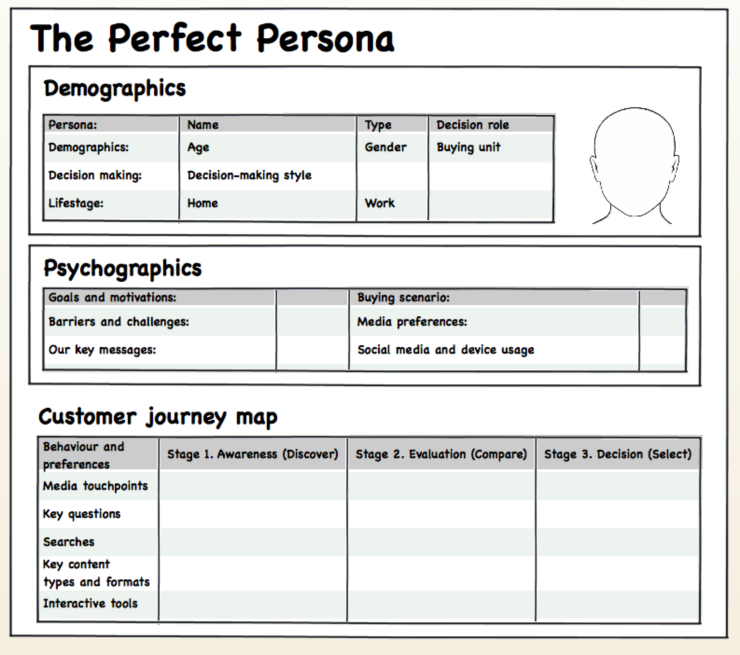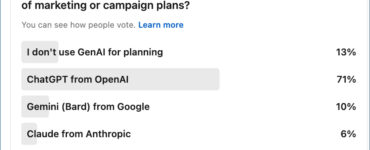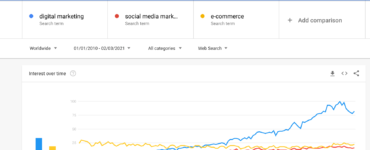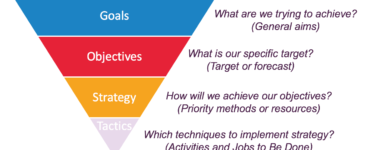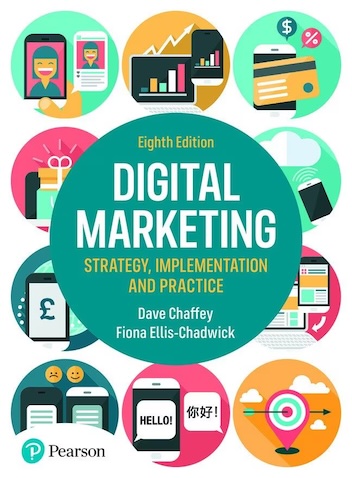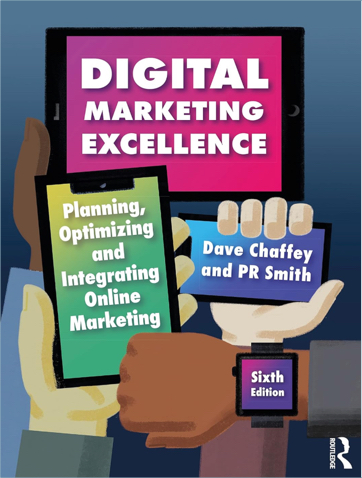A persona mnemonic and a 10-point checklist to help you create more customer-centred personas
I’ve been a big fan of using customer personas to help make marketing more customer-centric for a long time. In fact, since around 2003, when I was introduced to them on a consulting / training project by Matt Dooley, a customer experience manager in the HSBC Global E-business team.
Since then, personas have become much more widely used by companies of all sizes and types. But also widely abused… From examples I’ve seen, it seems smaller companies or their agencies often don’t have the time to research or a structure to define them in the detail needed for them to be useful when applied to inform new website designs or content strategies. I’ve also been asked, on projects to help ‘operationalize’ personas, in other words, to make them actionable in the real world, to improve web website designs and communications. So, in this post, I share some practical ideas to make personas more useful. In this companion article, I define personas with B2B and B2C examples. I have also collected many other examples of personas in the Smart Insights members customer persona guide.
To start considering what makes an effective persona, here’s a great persona mnemonic created by User Focus that summarizes the attributes of a good persona well.
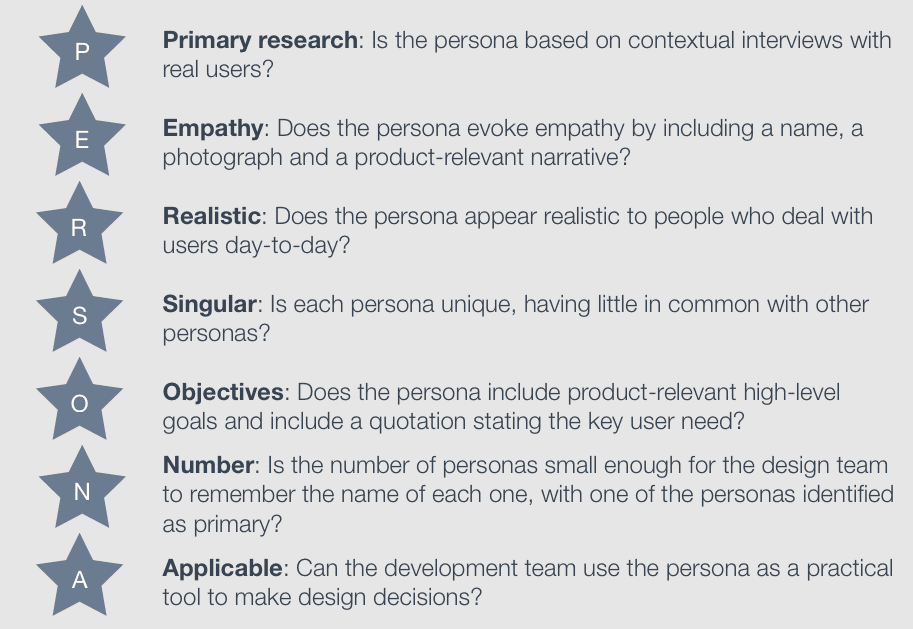
Of these, I think the first and third and final features are most important.
A 10-point checklist of persona practices
Based on my experience of reviewing personas in many different types of business, here are my recommendations of common components of personas you should consider depending on the budget you have available to research and define them. I’ve used these to create this recommended layout for a persona and examples available in the Smart Insights persona template
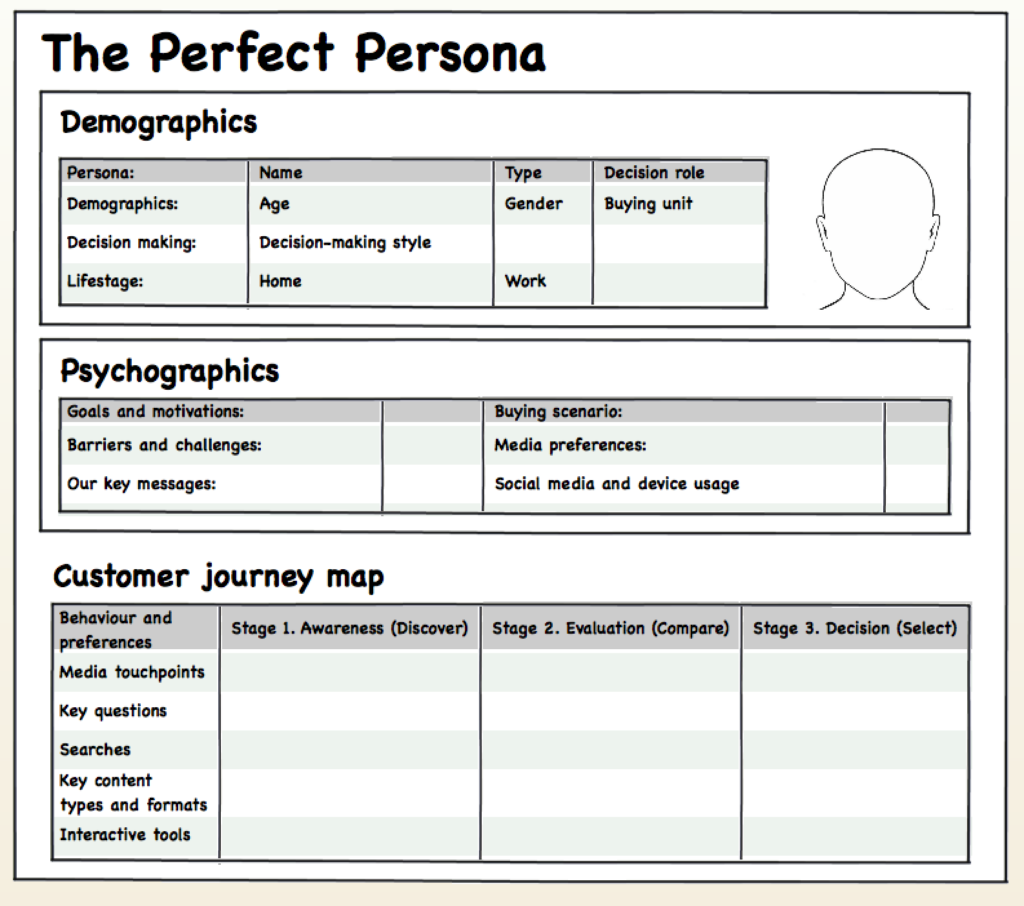
Let’s run through different insights that it’s useful to include. We will use this HubSpot primary persona as an example:
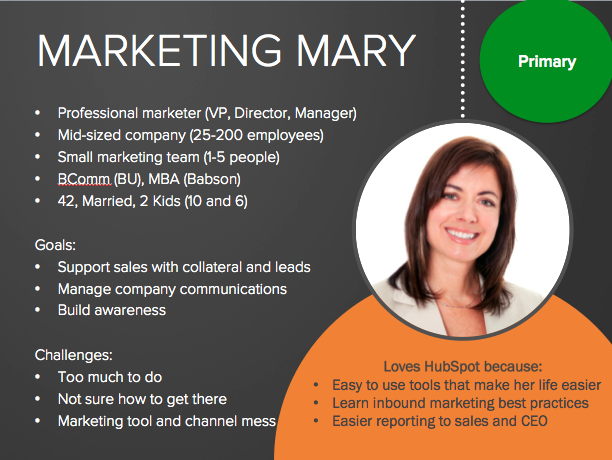
Note that this example works fine as a summary persona, but isn’t sufficiently detailed to inform website design and content creation.
1. Name. It’s usual to give personas a name to refer to them as shorthand within a team. Obvious, but I’ve seen some without, which will harm adoption.
Example: Mary
2. Label. It helps to give a label summarizing the characteristics too.
Example: Marketing Mary
3. Label Demographic characteristics. For example, age, gender, social group.
Example: 42 Married, 2 kids of high school age
4. Goals or motivations. These can be in the context of reasons for using a service, or more general life goals.
Tip: Use narratives to describe the context. Narratives and quotes can help bring personas to life, as the more detailed examples in our persona guide show.
5. Challenges, barriers or pain points (and key messages). A summary of the need for a product or service. Which factors will drive purchase.
Some personas go beyond defining the audience, to summarize key messages which resonate with the audience given their motivations and pain points. We we like this approach since it makes the persona more actionable.
These key messages will be used to influence the purchase decision based on understanding motivations, pain points and countering objections.
6. Buying decision behaviours. Different personality types may affect the speed of decision-making or the type of information used to take the decision.
Example: The next section shows four decision behaviours that are useful to consider for decision making.
7. Information needs. Related to buyer behaviour, the information used to take decisions. This can be summarized on a content-mental model map.
8. Platform usage. For example, use of device type or social network, usually in the context of purchase.
Example: Uses a desktop computer at work, rarely uses a smartphone for work decisions, instead uses it mainly for email
9. Customer journey maps. Often considered a separate technique, but for me an essential part of the persona to make them operational so they can be applied to improve content and site design. There are more examples shown in our persona guide.
Example: This customer journey example, also from HubSpot shows how by defining three simple stages you can consider the search keywords, content types and tools your audience may be looking for.
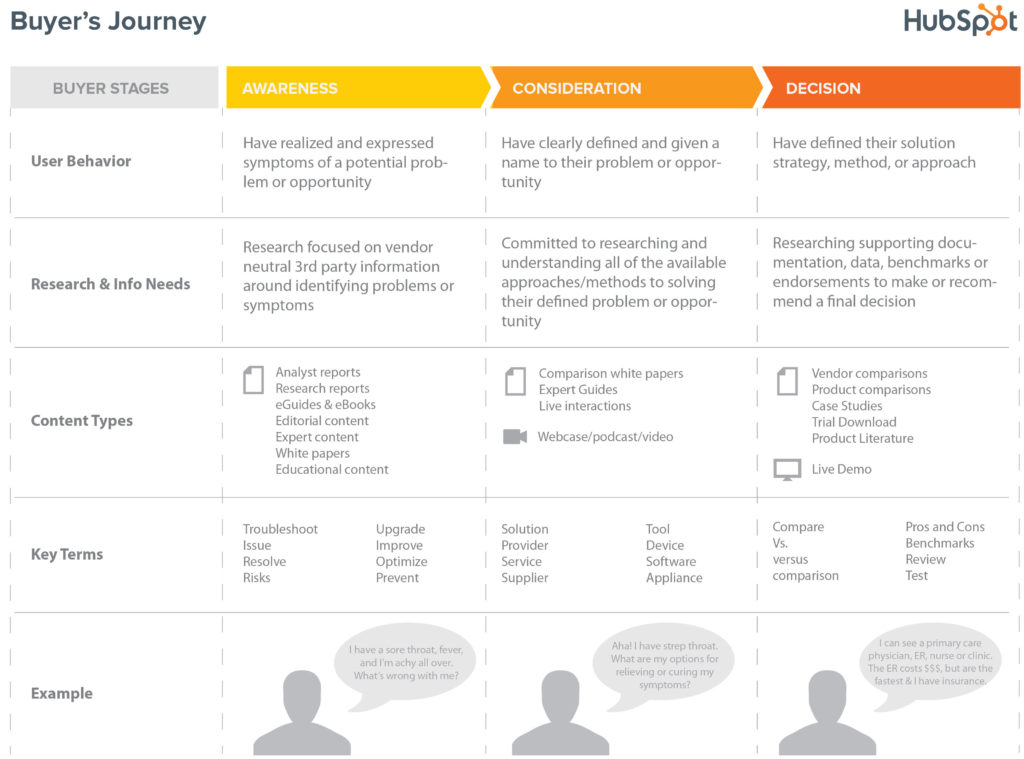
10. Perceptions, Perceptions of need for product or service or competitors which can be plotted on a perceptual map.
That’s it, a lot of insight to include potentially! I hope you find this checklist useful and it gives you some food-for-thought as to how you can improve your personas.
I haven’t touched on how to research personas – we have a separate guide on this. Certainly, there are a lot of great free resources from the platforms available plus primary research techniques.
